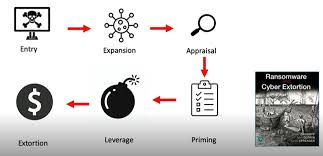Introduction: The Next Generation of Connectivity
As we enter 2024, the anticipation surrounding 6G technology is building, promising to redefine connectivity and enhance the internet experience on an unprecedented scale. While 5G laid the groundwork for faster speeds and improved connectivity, 6G aims to take it further, with ambitious goals that include ultra-low latency, massive device connectivity, and enhanced AI integration. This article examines the implications of 6G for the future of the internet.
1. Ultra-Fast Speeds and Low Latency
One of the most exciting features of 6G technology is its potential to deliver ultra-fast internet speeds, projected to reach up to 100 Gbps or even higher. This leap in speed will facilitate seamless streaming of high-definition content, virtual reality experiences, and real-time interactions without lag.
The ultra-low latency associated with 6G, potentially as low as 1 millisecond, will revolutionize applications that require instantaneous feedback, such as autonomous vehicles, remote surgeries, and immersive gaming. This capability will enable new possibilities for industries like healthcare, where real-time data sharing can significantly enhance patient care and outcomes.
Moreover, the enhanced speed and reliability of 6G will support the growing number of Internet of Things (IoT) devices, which are expected to surpass billions in the coming years. With 6G, devices can communicate more efficiently, enabling smarter cities, improved supply chain management, and advanced environmental monitoring systems.
2. Enhanced AI Integration
6G technology is expected to further integrate artificial intelligence (AI) into network management and data processing. With the exponential growth of data generated by IoT devices and user interactions, AI will play a crucial role in analyzing and managing this information.
In 2024, we can expect AI-driven networks that automatically optimize performance, predict traffic patterns, and enhance security measures in real-time. This intelligence will lead to more efficient use of network resources, reducing congestion and improving user experiences.
Additionally, the convergence of AI and 6G will enable new applications in various sectors, such as personalized healthcare, advanced robotics, and smart agriculture. By harnessing the power of AI alongside enhanced connectivity, industries can drive innovation and improve service delivery.
3. Implications for Privacy and Security
While the potential of 6G is vast, it also raises important questions regarding privacy and security. As connectivity expands and devices become more integrated into daily life, the volume of data collected will increase significantly. This necessitates robust measures to protect user information and ensure compliance with data protection regulations.
In 2024, the focus on cybersecurity will intensify as organizations prepare for the challenges posed by 6G. This includes developing advanced encryption methods and privacy-preserving technologies to safeguard user data from potential breaches and misuse.
Furthermore, as 6G facilitates more widespread data sharing between devices and systems, it is essential for policymakers to establish clear guidelines on data ownership and usage. Striking a balance between innovation and privacy will be critical to gaining user trust and ensuring the responsible development of 6G technologies.
Conclusion: A Connected Future with 6G
As we look forward to 2024 and beyond, the emergence of 6G technology heralds a new era of connectivity that promises to transform the internet and our daily lives. With ultra-fast speeds, enhanced AI integration, and the need for robust security measures, 6G will drive innovation across industries and create a more interconnected world. Embracing these advancements while addressing the associated challenges will be crucial in shaping a future where connectivity enhances our experiences and empowers society.

